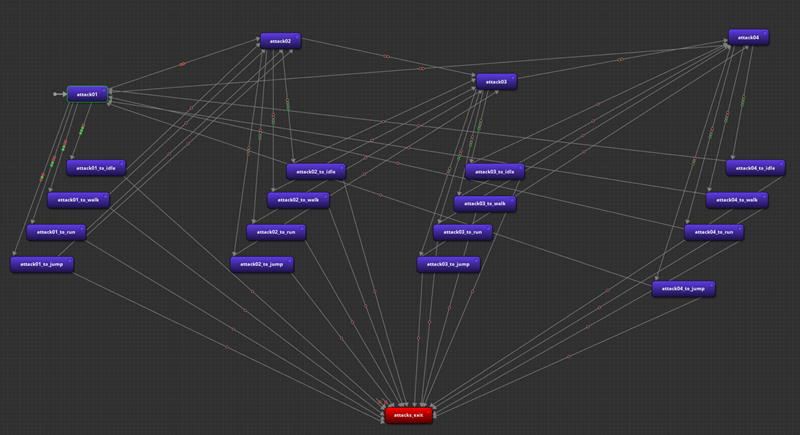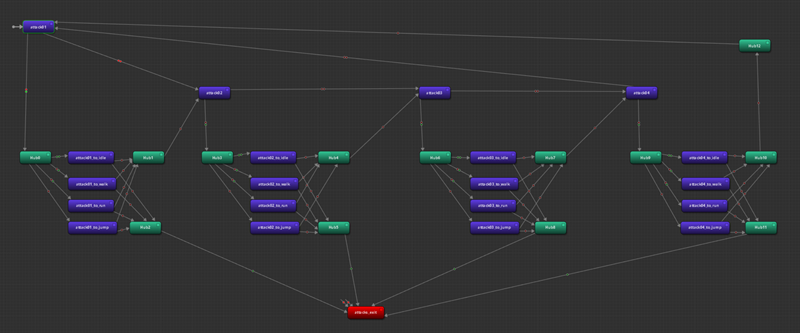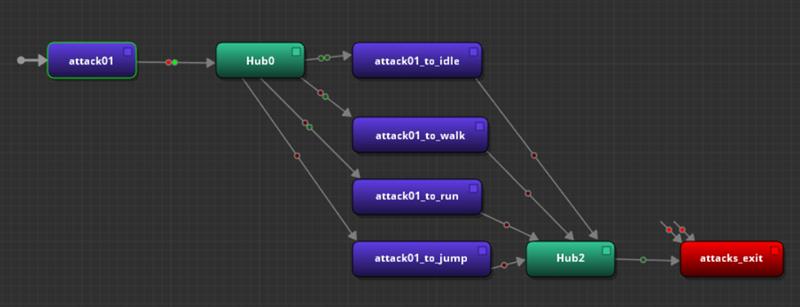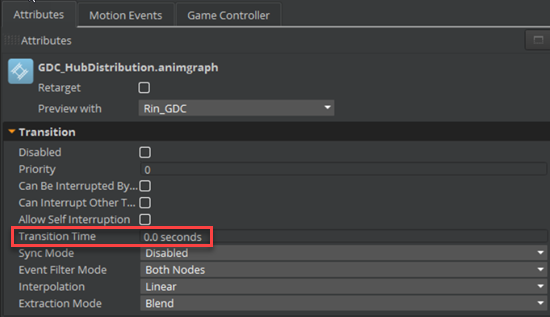Simplify Node Groups with Hub Nodes
The Hub node acts as a connection point between groups of nodes in an animation graph. This pass-through node outputs or forwards the pose of the node that entered it. Hub nodes reduce the complexity of transitions by acting as the central point in a state machine. By connecting multiple nodes to hubs, you can combine transition lines that share the same transition conditions and strategically organize nodes to create an easy-to-read state machine.
Example The following animation graph has many groups and transitions.
 The same graph with Hub nodes simplifies transitions between the groups, which makes the graph cleaner and easier to read.
The same graph with Hub nodes simplifies transitions between the groups, which makes the graph cleaner and easier to read.

To use Hub nodes in your animation graph
Add a Hub node in an animation graph by doing one of the following:
- In the Anim Graph Palette, choose the Sources tab and drag Hub to the graph.
- In the graph, right-click and choose Create Node, Sources, Hub.

Repeat to add as many Hub nodes as you need.
Add multiple like nodes, such as motion nodes or state machines, between the Hub nodes and create transitions. Example
Transitions between motions are simplified by placing them between two Hub nodes.

In the example, the transition between attack01 and Hub0 is a shared transition. If you remove the Hub0 node, you would then individually add those two conditions from attack01 to each of the four transitions going into the attack01* nodes.
For all transitions entering a Hub node, set its Transition Time to
0.0seconds. This ensures that an extra delay is not added to the transition.

